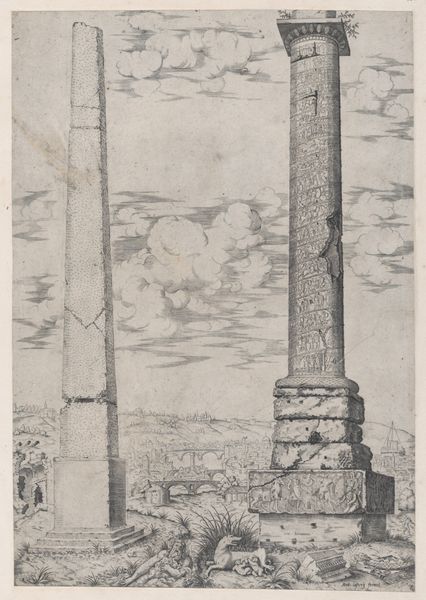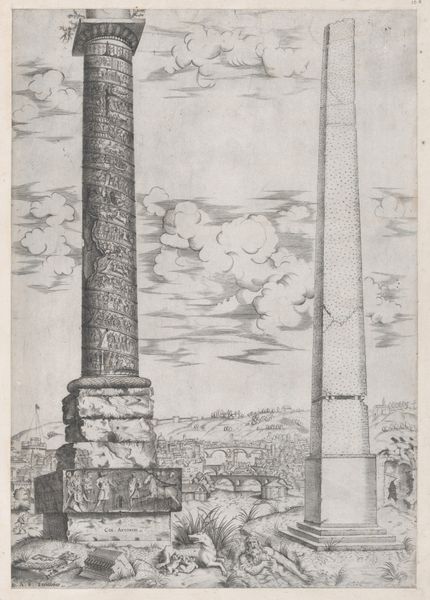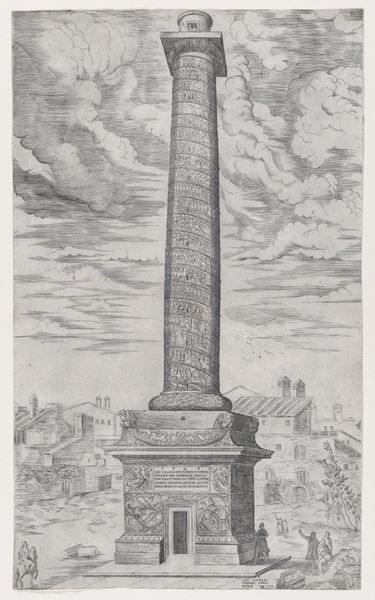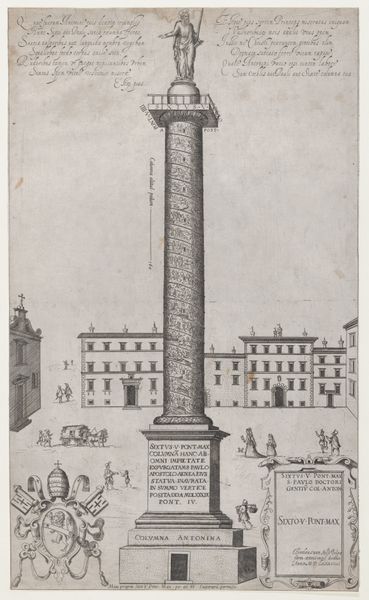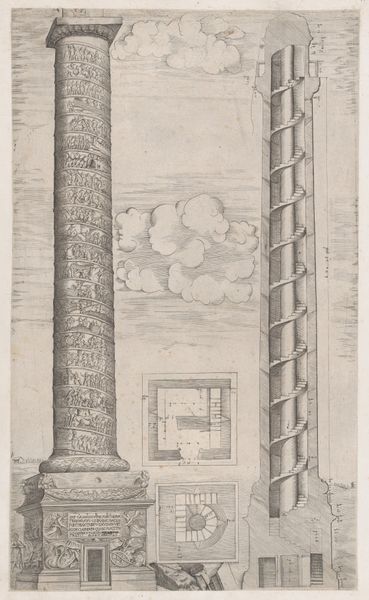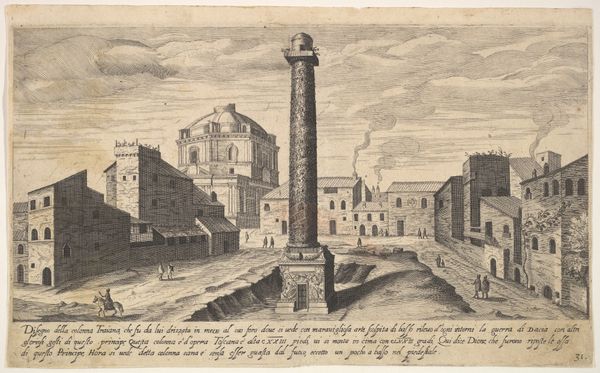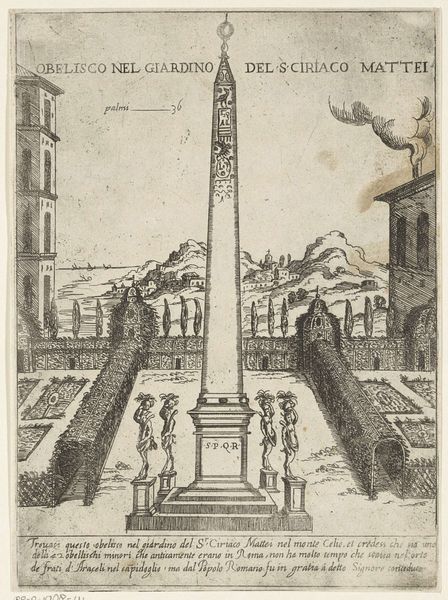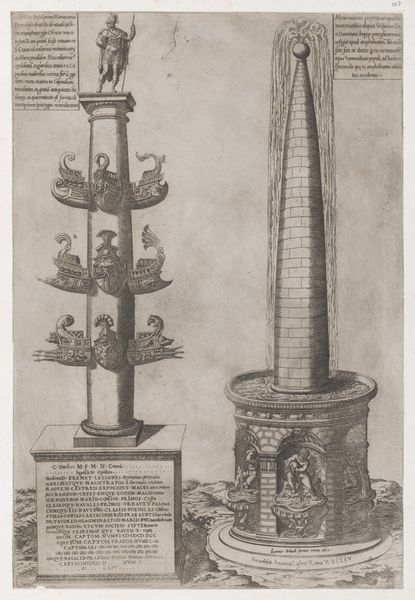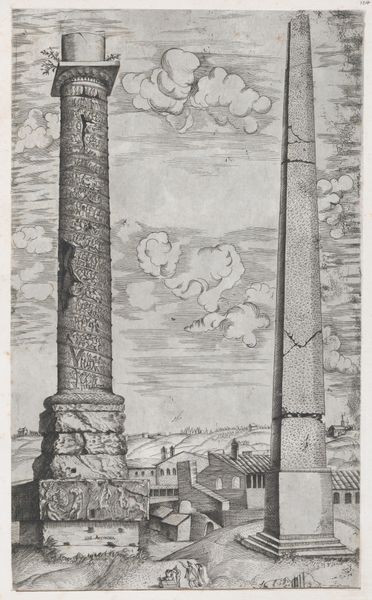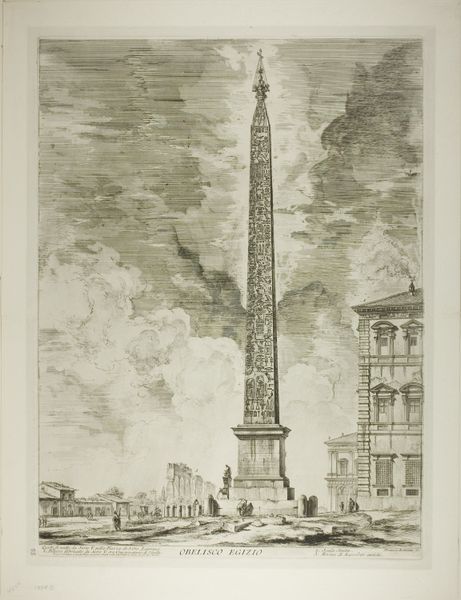
Speculum Romanae Magnificentiae: Trajan's Column 1581 - 1586
0:00
0:00
drawing, print, engraving, architecture
#
portrait
#
drawing
# print
#
human-figures
#
old engraving style
#
figuration
#
form
#
geometric
#
ancient-mediterranean
#
horse
#
human
#
line
#
cityscape
#
history-painting
#
italian-renaissance
#
engraving
#
architecture
Dimensions: sheet: 19 x 11 5/8 in. (48.2 x 29.6 cm)
Copyright: Public Domain
This print of Trajan’s Column was made in the late 16th century by Giovanni Ambrogio Brambilla, using the intaglio process of etching. Think about the sheer labor involved. Brambilla would have covered a copper plate with a waxy, acid-resistant ground, then used a sharp needle to draw through it, exposing the metal. The plate was then immersed in acid, which bit into the lines. This process was repeated to deepen the lines, creating an image capable of holding ink, before being printed onto paper. The resulting image translates the original marble monument into a new visual language of line and tone. Look at the level of detail, and try to imagine the degree of skill that was required to produce this kind of image. The print isn’t just a record of the column, but also evidence of a highly specialized form of craft production. It prompts us to reflect on the many hands and skills required to produce images, and the value we place on craft and artistry.
Comments
No comments
Be the first to comment and join the conversation on the ultimate creative platform.
